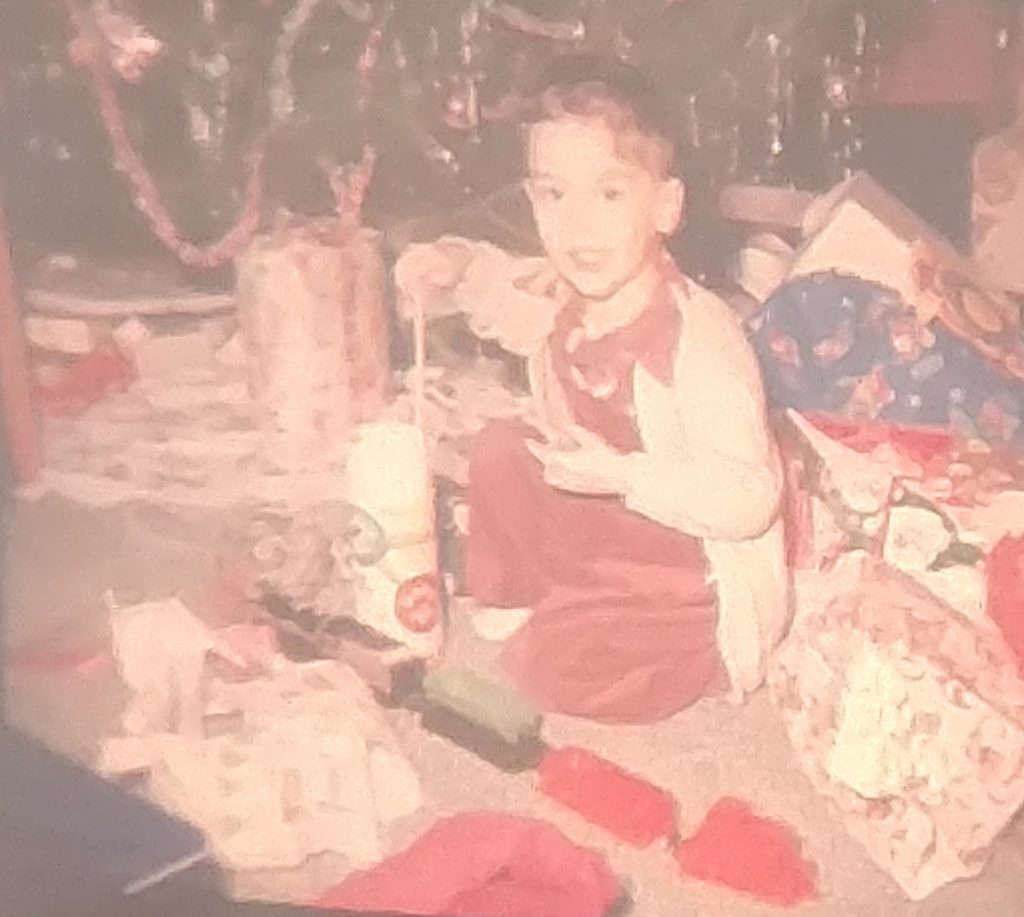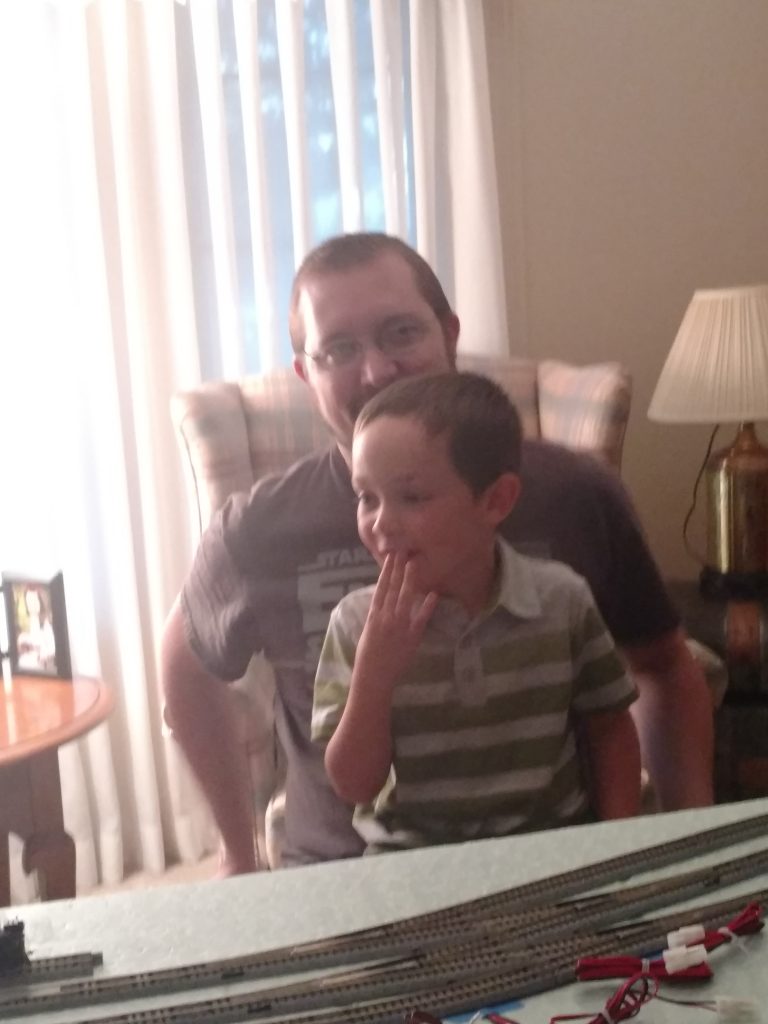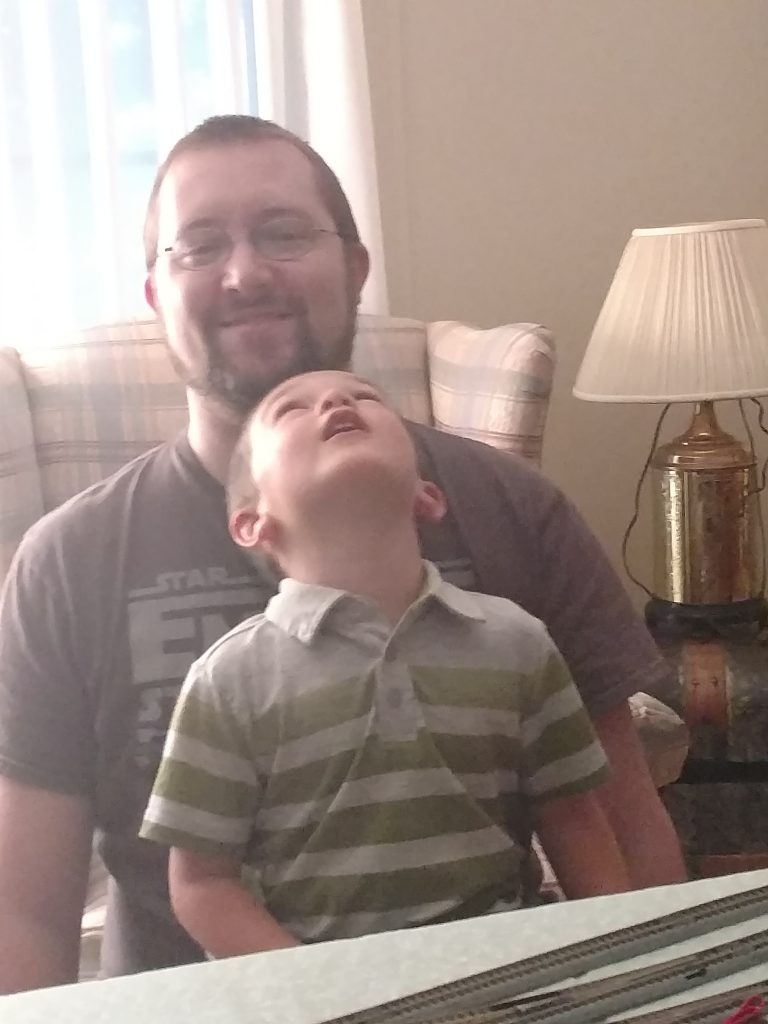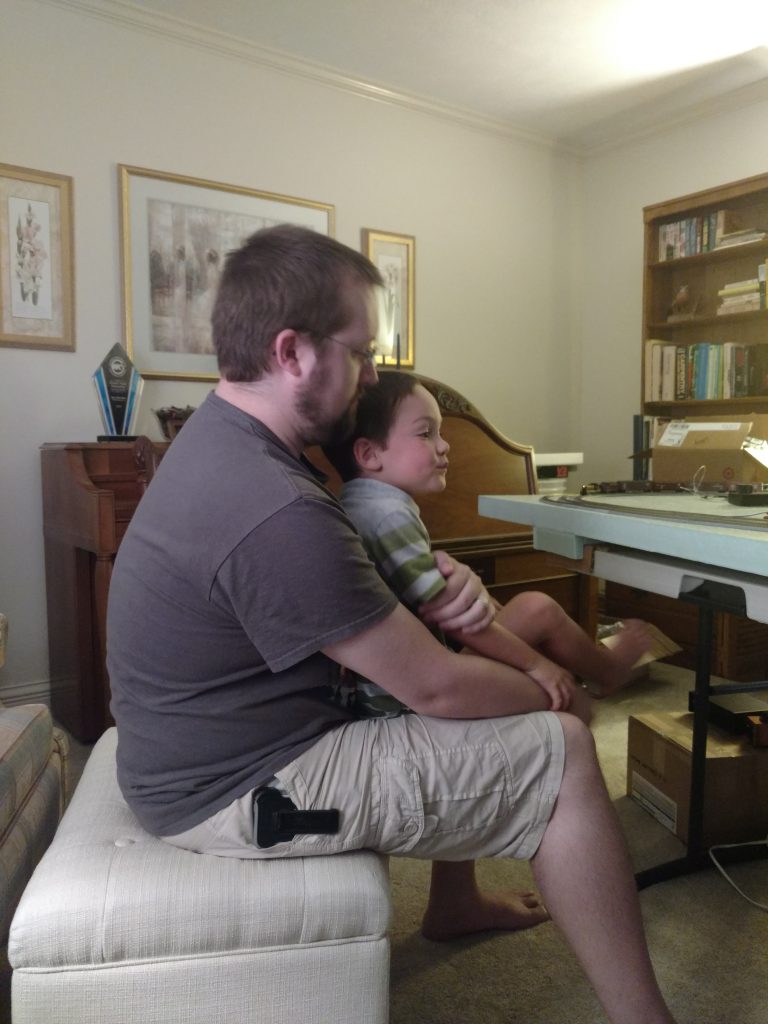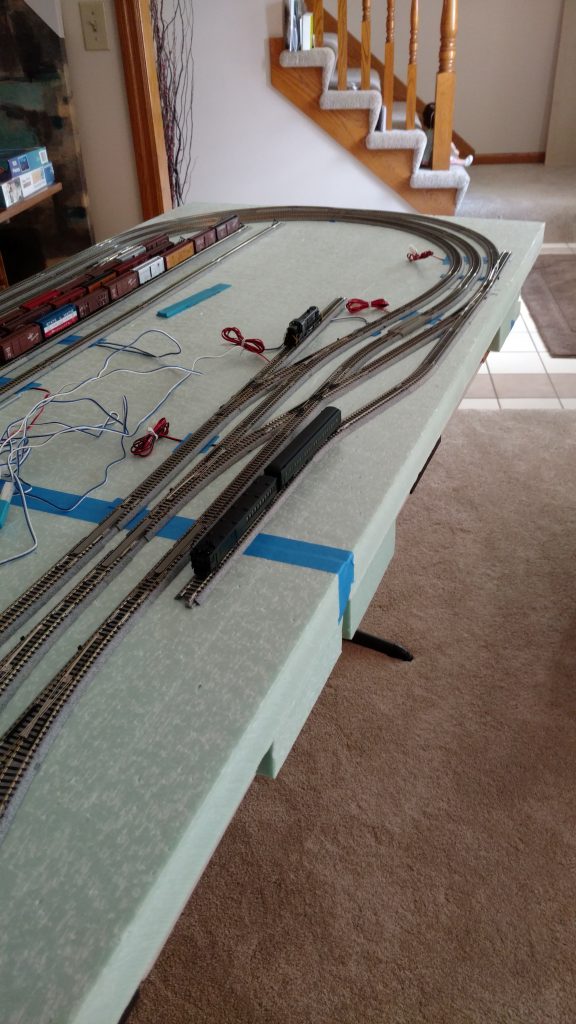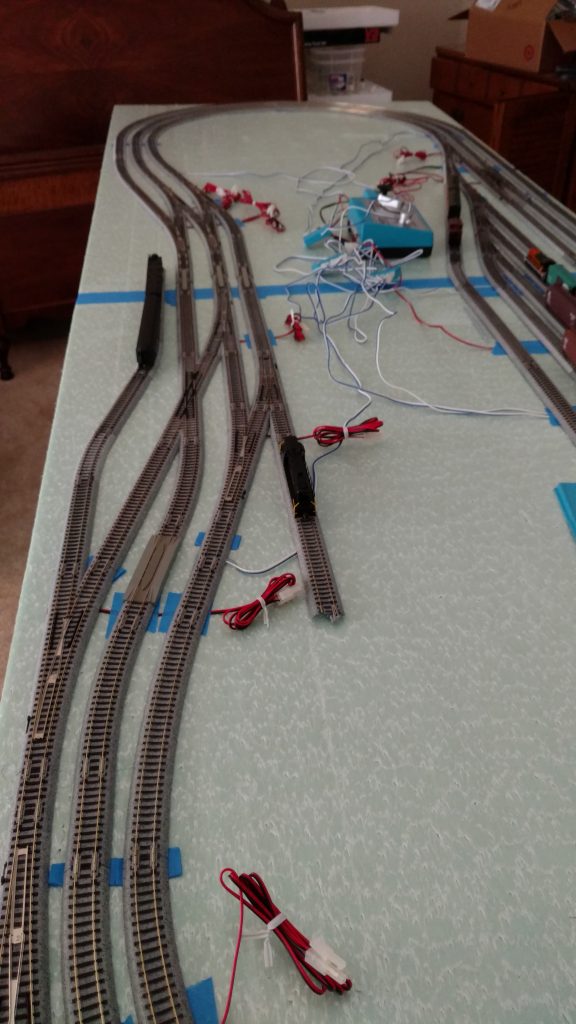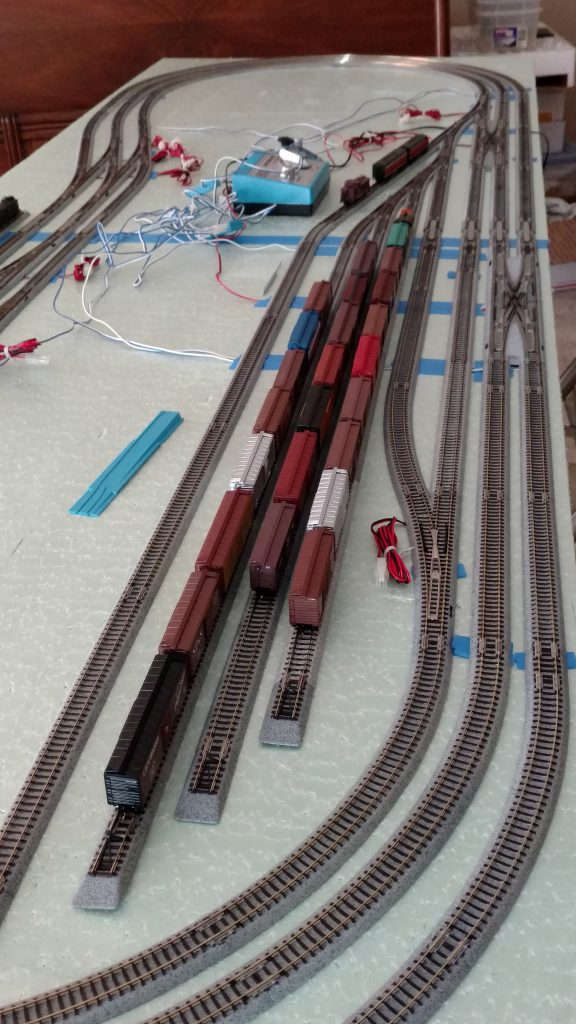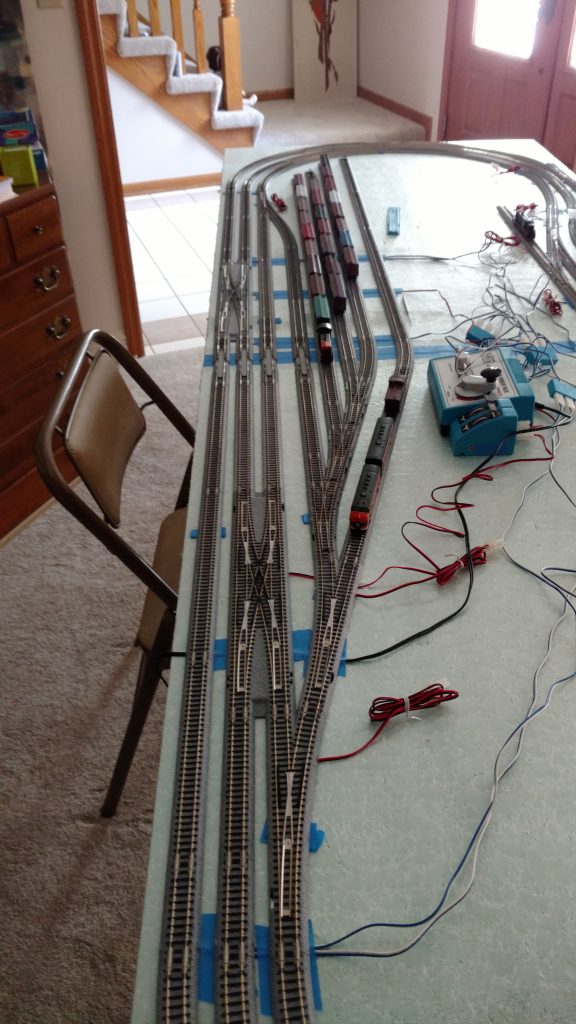Forward
My intent with this page of my website, and those that follow, is to share my adventures in the hobby of model railroading over the decades, and an approach to the hobby that others, who may have faced the same obstacles I have, can use to get out of their chairs and into the hobby room, whether that be the dining room, a spare bedroom, the whole basement, or just a small bookshelf. My underlying assumption in all of this is that you are or will become interested enough in this hobby to design, build and operate a model railroad, no matter how big or small. I wish all of you much enjoyment as you explore this hobby because, after all, model railroading is fun!
In the Beginning
Yup, I’m an older gentleman who still plays with trains! But those of us more serious types prefer to think of this hobby as one of modeling transportation systems and their operations. I started in the hobby like most, with the gift of a train set at Christmas. My younger brothers and I pleaded with Dad for a sheet of plywood to set up our track and run trains. We at least got a papier mache’ mountain built before they lost interest, and my teenage years got in the way. But Dad took me to visit the Southwest Michigan Model Railroad Club in Mr. Maurice Hiler’s basement in the late 1960s and seeing those men run trains kept the interest alive.
Like many model railroaders, as a twenty-something enthusiast, I had dreams of a basement-sized empire complete with yards and sidings full of rolling stock, engine terminals with steam and diesel locomotives, and scale miles of terrain through which long freight and passenger trains would roll. My problem was in more than 40 years the only layout I built on which any trains ever ran was a bare board switching layout on the bookshelf in my college dorm room.
After three false starts with large HO scale layouts, a ten year absence from the hobby, and a brief foray into garden railroading, I was looking at other hobby possibilities for retirement when a chance meeting with an old operating crew buddy encouraged me to take another look at model railroading as a pastime for my retirement years. I gained a lot of encouragement and moral support from my friend Stu and three more railroading friends that joined us for what soon became our weekly railroad breakfast club.
A New Approach
I decided I needed to take a lesson or two from my prior decades in (and out of) the hobby and try a new approach. Since building large layouts seemed to result in a loss of interest before I could get to the operating stage, maybe I could keep my interest piqued by getting a small layout into operation quickly, and then expanding it. Portability is important since as a retiree I may not always have a large amount of space like a whole basement.
N scale fit the definition of small, and the quality was far better than 40 years ago, nearly on par with HO. I could fit an oval with sidings on a hollow core door, and by using Kato Unitrack I could have reliable trackwork and turnouts with built in switch motors, without all the fussing and fitting demanded by laying flex track and attaching switch motors to unpowered turnouts. DCC would let me run multiple trains at one time in a small space. And T-Trak standards would help to channel my design ideas and force me to bite off little pieces of railroad that I could complete and operate in stages.
So, I plunged into model railroading anew. I purchased locomotives, rolling stock, track, and a used NCE DCC 5 Amp system. Using a six foot folding utility table as a base, I set it up in front of the fireplace in the family room, assembled an oval of track, connected two wires, built a short train, plugged the command station in and, bingo, I was running a train. After more than forty years I finally had an operating layout, temporary though it was!
Soon I found myself occasionally turning on the layout and just letting a train run while my wife and I watched TV. She even commented about having missed the sound of a model train and how it was kind of soothing to have the background noise behind the TV programs we watched. However, the enchantment wore off about the time I ran my sound-equipped 2-8-4 Berkshire for more than a few minutes; we both agreed the noise was more than a little distracting. But now I had all the motivation I needed to begin planning that large layout; in sections and T-Trak modules that I could build and run as I gradually plugged them in to the master layout plan under development. But how to keep the interest up?
With tentative agreement from the property manager (DW – dear wife) I snagged temporary rights to some open space in the rarely used front room, set up the folding table, added a two inch piece of foam insulation board cut to size to fit a quickly devised plan for a twice around oval with passing siding, a yard, an engine ready track, and some industry sidings. Some additional wiring for turnouts and feeders, and I was back in business in the front room. When my son came by and my grandson visited, I knew I had a hit on my hands by the smiles on their faces, which put a big smile on mine, too. I was running double headed freight trains eighteen cars long, and passenger trains in the form of a doodlebug with trailer. Still all temporary, but I was running trains!
Here’s a look at the quickly devised layout which became the test concept for the AWRy:
This concept layout is eight feet long and 32 inches wide. Consistent with the new design philosophy the new layout will be built to T-Trak standards but using medium radius (15 inch) curves resulting in 432 mm (17 inch) square corner modules. The corresponding straight modules will be 17 inches deep for a full depth module. Using these standards, the new size will be 272.4cm by 86.4cm (approximately 108 by 34 inches).
The twice-around oval built on six T-Trak modules which can be in operation within weeks of starting construction, would become the heart of a 17×20 foot around-the-walls multi-deck layout with a central peninsula in the new home we were destined to buy two years later. Or maybe not if I just don’t get around to it. But that’s ok too, because I’m finally running trains, and frankly, that’s all I ever really wanted to do.
Transitions
Sometimes the best laid plans go awry, no pun intended. Just three weeks after the above photos were taken my father passed away and I became the patriarch of the family. Dealing with his estate took much of the rest of the year, while at the same time we began outfitting and moving into our winter home, an apartment in our daughter’s home in Texas. Then I discovered I would undergo major surgery and an extended recovery that would carry us well into the following year. On the plus side, the long recovery in our new Texas apartment afforded much model railroad planning time, a most enjoyable, for me, part of hobby!
At this time the tale of two railroads began! But let me continue with my own “transition era” experiences. On our return to Michigan after that first Texas winter, we took a trip out west to visit longtime friends and begin our quest to visit all the national parks in the contiguous 48 states. Completing distribution of my father’s estate continued and the end of that year saw little progress on the Arcadia Creek and Woodbury Railway.
Our next Texas visit lasted about four months and provided plenty of time to design railroad number two, the BNSF Hollister Subdivision. I was looking forward to getting back to the Arcadia Creek; but about two weeks after we returned from Texas we decided to downsize, sell our two story home on .4 acres, and move to a condominium. The rest of the year involved getting ready for the move and selling our home. Following that move we decided to sell a rental property we owned and to help our son and daughter-in-law purchase a new home, the condo adjacent to ours! During the mad scramble at year end we got them moved before Christmas, just in time for our annual migration to Texas.
And then a month later, COVID hit, just after we finished a trip to San Antonio, and Fredericksburg and a one night stay in an 1894 Pullman Palace Car once used by Theodore Roosevelt. The rest of this Texas visit involved a whole lot of sheltering in place and family time with the grandkids, a huge plus to an otherwise unpleasant situation, the pandemic! And work on the new train room and the BNSF continued. We returned to Michigan at the end of May; and work finally commenced on the Arcadia Creek. This was a three year transition time, but it brings us to now. This has been a long prelude to the stories of my two railroads, but the point was to show that priorities change, and we can still enjoy our hobbies as they do. There are many aspects to model railroading that can be enjoyed in all sorts of circumstances, as you’ll find out while you continue to read my story.
The tale of two railroads continues on separate pages providing detailed planning, concepts, and background information. Regular updates for each railroad will appear as posts on each railroad’s page.

